
Gamelan Son of Lion partners Philip Corner and Evan Schwartzman perform this Fluxus composition where two pianists play piano notes on the chromatic scale in relationship to numbers counted out loud from 1 to 88, forward and backward, creating an unusual texture and counterpoint that when taken as a whole becomes hypnotic and obsessively absorbing; inexplicably interesting.
In Stock
Quantity in Basket: None
Log In to use our Wish List
Shipping Weight: 3.00 units
EU & UK Customers:
Discogs.com can handle your VAT payments
So please order through Discogs
Sample The Album:
Evan Schwartzman-piano, voice
Philip Corner-piano, voice, composer
Click an artist name above to see in-stock items for that artist.
Label: ANTS Records
Catalog ID: AG16
Squidco Product Code: 28654
Format: CD
Condition: New
Released: 2017
Country: Italy
Packaging: Cardboard Gatefold
Recorded at Rutgers University, MGSA, New Brunswick, New Jersey on November 27, 1985.
"After "Conceptmusic" (see catalogue), his super-provocative, "potentially-musical" artifact, here a new work by Philip Corner, the avantgarde Fluxus maestro. Recorded in 1985, this long piece, unpublished until now, belongs to the Gamelan series, which Corner has worked for years and counting dozens of pieces. In the word of the author, the piece, for two pianists represents one of the most "curious" manifestation in the Gamelan series. The increment-link, high-to-low, is maintained on the chromatic scale of the piano keyboard, giving durations from 1 to 88. However they are realized in both directions at the same time. And counted out loud."-ANTS
"Music by Philip Corner very rarely make it to these pages; I am not sure why that is, but maybe his releases are more about the world of art and less about the sort of underground we're serving. It seems the only previous time I reviewed something from him was in Vital Weekly 899, with a piano piece and some environmental sounds. It was more an improvised piece.
Corner was one of the founding members of Fluxus, but also involved with various new music ensembles. Here is a composition of his, which he and Evan Schwartzman play on two pianos and both of them count out loud. "The increment-link, high-to-low, is maintained on the chromatic scale of the piano-keyboard, giving durations from 1 to 88. However they are realized in both directions at the same time".
This thirty-five minute piece (recorded in 1985) is surely a strange piece. The counting up and down sound very rigid and over the course of this piece gets something hypnotic, even when it makes no sense or perhaps even when they might miscount (I am not sure if that happened. All along there is the occasional bang on the key (or two) of the piano. On the diagram on the cover one can see which key correspond with the number. The first two times I started playing this piece I was quickly annoyed by this and dismissed it as arty-farty nonsense, but when I finally decided to sit down and listen properly I thought this was most captivating piece of music, especially the way they keep counting quickly those numbers up and down, giving the piece a most curious groove. This is an excellent release!"-Fran de Waard, Vital Weekly
Get additional information at Vital Weekly
Artist Biographies
• Show Bio for Evan Schwartzman Evan Schwartzman is a contemporary pianist and performer, a member of Gamelan Son Of Lion with Philip Corner. He also performs solo recitals, and has performed with classical violinist Joel DeWitt. ^ Hide Bio for Evan Schwartzman • Show Bio for Philip Corner "Philip Lionel Corner (born April 10, 1933; name sometimes given as Phil Corner) is an American composer, trombonist, alphornist, vocalist, pianist, music theorist, music educator, and visual artist. After The High School of Music & Art in New York City, Philip Corner received his BA (1955) at CCNY, where his most important teacher was Fritz Jahoda; and an MA (1959) from Columbia University where his composition teachers were Otto Luening and Henry Cowell, The two years in between (1955-57) were spent in Paris at the Conservatoire Nat'l de Musique, following the class "Philosophie Musicale" of Olivier Messiaen. Equally important was his friendship with the Canadian painter Paul-Emile Borduas, who introduced him to "la grande aventure nord-américaine", to which he returned and became part of the group around John Cage. At the same time he resumed his studies of the piano with Dorothy Taubman, which was to have a significant role in his compositional as well as performing life. He taught Modern Music at the New School for Social Research from 1967-1970, inheriting the class founded by John Cage at double remove after Richard Maxfield, with whom he was teaching assistant, and Malcolm Goldstein. His teaching career started at a New York City high school and continued at the New Lincoln School where he helped develop the music department and introduced innovative courses (1966-1972). During this period he was married to the astrologer and trance medium Julie Winter who was also a minister in the Church of Religious Science, with which he too was associated, composing music to be sung at meditation sessions. From 1972 to 1992 he continued as professor at the newly established Livingston College, a part of Rutgers, the State University of New Jersey, soon to be absorbed into the Mason Gross School of the Arts. He then took early retirement and moved to Reggio Emilia, Italy where he had previous contact through the Pari e Dispari "Arte Club Internazionale". An early friend, the dancer and choreographer Phoebe Neville, joined him there and became his wife and performance partner. He was a founding participant of Fluxus since 1961, was a resident composer and musician with the Judson Dance Theatre from 1962 to 1964 and later with the Experimental Intermedia Foundation upon the invitation of Elaine Summers, for whose dance company he served as musician. He co-founded with Malcolm Goldstein and James Tenney the Tone Roads Chamber Ensemble in 1963 (active until 1970), with Julie Winter Sounds Out of Silent Spaces in 1972 (active until 1979) and with Barbara Benary and Daniel Goode, Gamelan Son of Lion in 1976 (still active). In addition to his work as a composer and musician, he has created numerous assemblages, calligraphy, collages, drawings, and paintings, many of which have been exhibited internationally. He has also written much poetry, which like some of his music, has occasionally appeared under his Korean pseudonym Gwan Pok, meaning "Contemplating Waterfall". Editions in silk-screen have been brought out by the Archivio F. Conz, Verona, and Pari e Dispari Agency in Reggio Emilia, among others. Works are regularly exhibited in galleries, mostly in Europe, and are in notable museum collections. His principal gallery is UnimediaModern in Genova, whose director Caterina Gualco maintains a large collection. Other important collectors are Hermann Braun in Germany (deceased 2009) and Luigi Bonotto in Bassano who maintains an extensive documentation. During "Mississippi Freedom Summer 1964" and for some of the following year, Corner was a civil rights volunteer and Freedom School teacher in Meridian, Miss. "Mark Levy Collection. Queens College/CUNY Rosenthal Library Civil Rights Archive." In 1968, Corner signed the "Writers and Editors War Tax Protest" pledge, vowing to refuse tax payments in protest against the Vietnam War." ^ Hide Bio for Philip Corner
Have a better biography or biography source? Please Contact Us so that we can update this biography.
7/9/2025
Have a better biography or biography source? Please Contact Us so that we can update this biography.
Track Listing:
1. Gamelan Coming & Going 35:54
Compositional Forms
Avant-Garde
Piano & Keyboards
Unusual Vocal Forms
Duo Recordings
New in Compositional Music
Search for other titles on the label:
ANTS Records.


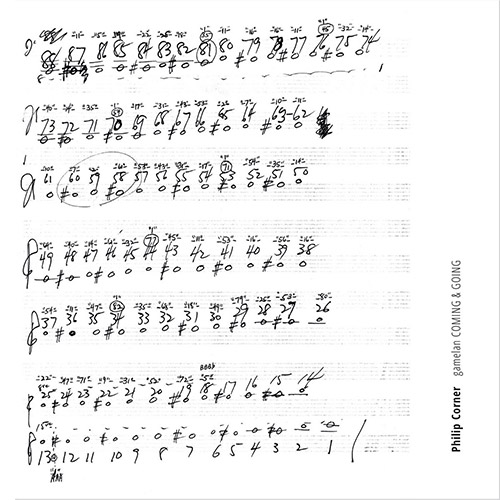
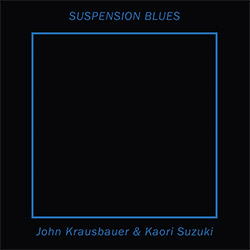


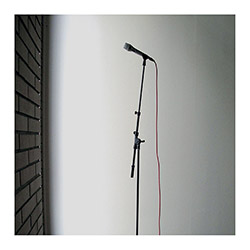



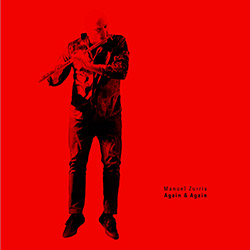

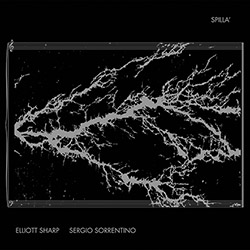


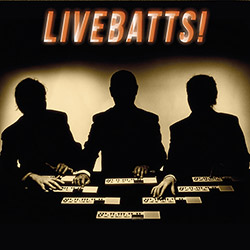


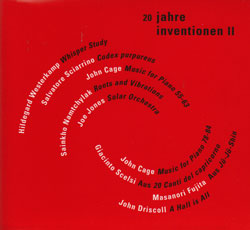



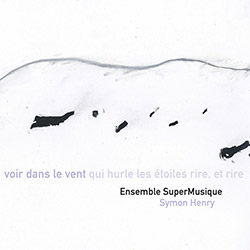

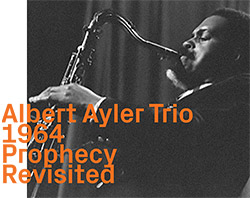

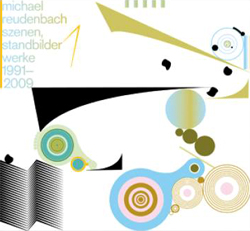




![BlueRing Improvisers: Materia [2 CDs]](https://www.teuthida.com/productImages/misc4/36513.jpg)




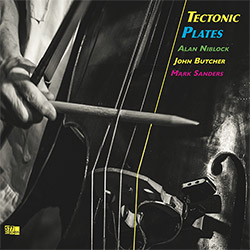



![Wheelhouse (Rempis / Adasiewicz / McBride): House And Home [VINYL]](https://www.teuthida.com/productImages/misc4/36462.jpg)
![+DOG+: The Light Of Our Lives [2 CDs]](https://www.teuthida.com/productImages/misc4/36009.jpg)


![Parker, Evan / Jean-Marc Foussat: Insolence [VINYL]](https://www.teuthida.com/productImages/misc4/36398.jpg)










![Deupree, Jerome / Sylvie Courvoisier / Lester St. Louis / Joe Morris: Canyon [2 CDs]](https://www.teuthida.com/productImages/misc4/36404.jpg)



![Eventless Plot | Haarvol: The Subliminal Paths [CASSETTE + DOWNLOAD]](https://www.teuthida.com/productImages/misc4/36232.jpg)










![Eventless Plot | Francesco Covarino: Methexis [CASSETTE + DOWNLOAD]](https://www.teuthida.com/productImages/misc4/36231.jpg)



![Das B (Mazen Kerbaj / Mike Majkowski / Magda Mayas / Tony Buck): Love [VINYL]](https://www.teuthida.com/productImages/misc4/36329.jpg)


![Eternities: Rides Again [CASSETTE]](https://www.teuthida.com/productImages/misc4/36247.jpg)
![Lopez, Francisco: Untitled (2021-2022) [2 CDs]](https://www.teuthida.com/productImages/misc4/36438.jpg)






![Money : Money 2 [2 CDs]](https://www.teuthida.com/productImages/misc4/35894.jpg)




![Klinga, Erik: Elusive Shimmer [VINYL]](https://www.teuthida.com/productImages/misc4/36258.jpg)
![CHANGES TO blind (Phil Zampino): Volume 9 - I Wave on a Fine Vile Mist [CD + DOWNLOAD]](https://www.teuthida.com/productImages/misc4/36061.jpg)

![Wallmart / Rubbish: Asset Protection [split CD]](https://www.teuthida.com/productImages/misc4/35900.jpg)


![+Dog+: The Family Music Book Vol. 5 [2 CDs]](https://www.teuthida.com/productImages/misc4/35897.jpg)
![Kuvveti, Deli : Kuslar Soyledi [CASSETTE w/ DOWNLOAD]](https://www.teuthida.com/productImages/misc4/36107.jpg)

![Brown, Dan / Dan Reynolds: Live At The Grange Hall [unauthorized][CASSETTE]](https://www.teuthida.com/productImages/misc4/36245.jpg)








![Palestine, Charlemagne / Seppe Gebruers: Beyondddddd The Notessssss [VINYL]](https://www.teuthida.com/productImages/misc4/36206.jpg)
![Palestine, Charlemagne / Seppe Gebruers: Beyondddddd The Notessssss [NEON GREEN VINYL]](https://www.teuthida.com/productImages/misc4/36207.jpg)

![Laubrock, Ingrid: Purposing The Air [2 CDs]](https://www.teuthida.com/productImages/misc4/35639.jpg)

![Yoko, Ono / The Great Learning Orchestra: Selected Recordings From Grapefruit [2 CDs]](https://www.teuthida.com/productImages/misc4/35841.jpg)









![Zorn, John / JACK Quartet: The Complete String Quartets [2 CDs]](https://www.teuthida.com/productImages/misc4/35609.jpg)

![Lonsdale, Eden: Dawnings [2 CDs]](https://www.teuthida.com/productImages/misc4/35480.jpg)



![Sorry For Laughing (G. Whitlow / M. Bates / Dave-Id / E. Ka-Spel): Rain Flowers [2 CDS]](https://www.teuthida.com/productImages/misc4/35985.jpg)

![Rolando, Tommaso / Andy Moor : Biscotti [CASSETTE w/ DOWNLOADS]](https://www.teuthida.com/productImages/misc4/36106.jpg)


![Electric Bird Noise / Derek Roddy: 8-10-22 [CD EP]](https://www.teuthida.com/productImages/misc4/35970.jpg)








![Elephant9 : Mythical River [VINYL]](https://www.teuthida.com/productImages/misc4/34624.jpg)



![Elephant9 with Terje Rypdal: Catching Fire [VINYL 2 LPs]](https://www.teuthida.com/productImages/misc4/35355.jpg)
![Deerlady (Obomsawin, Mali / Magdalena Abrego): Greatest Hits [VINYL]](https://www.teuthida.com/productImages/misc4/34876.jpg)







![Surplus 1980: Illusion of Consistency [CD]](https://www.teuthida.com/productImages/misc4/35069.jpg)
![Staiano, Moe: Away Towards the Light [VINYL + DOWNLOAD]](https://www.teuthida.com/productImages/misc4/35037.jpg)
![Coley, Byron: Dating Tips for Touring Bands [VINYL]](https://www.teuthida.com/productImages/misc4/17906.jpg)

![Lost Kisses: My Life is Sad & Funny [DVD]](https://www.teuthida.com/productImages/misc4/lostKissesDVD.jpg)